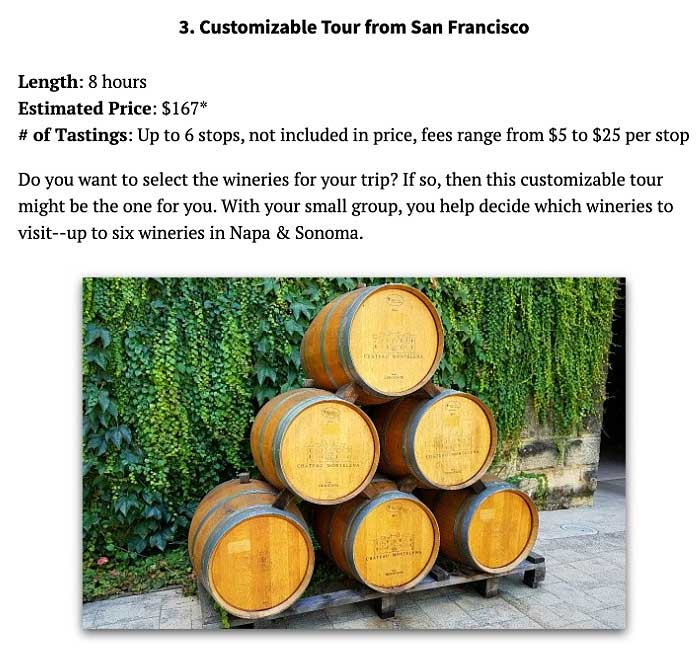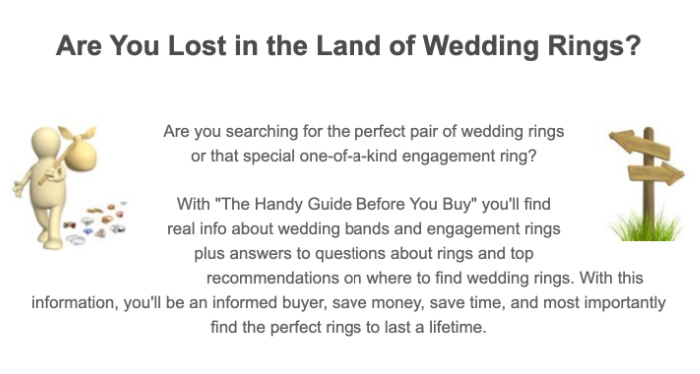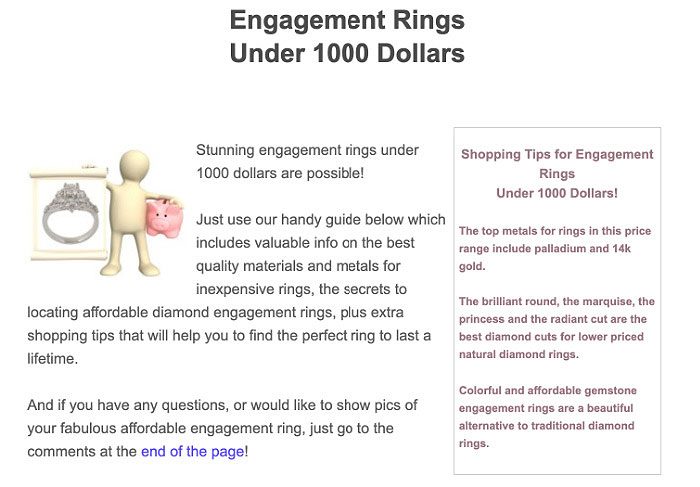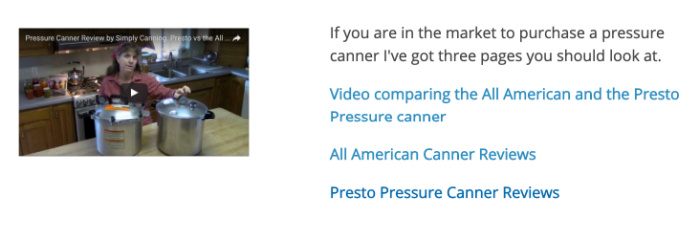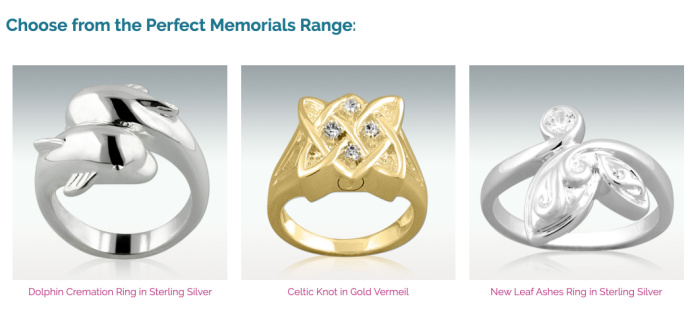
Affiliate marketing websites that put the customer’s needs and interests first are the ones that rise to the top. If you’ve decided affiliate marketing is the way you’d like to start earning money online, the most important rule of thumb is to serve your audience before focusing on earning. When you do this the money will follow.
There’s nothing I dislike more than a blog or website that “does” affiliate marketing. {yawn}
 I’m here to tell you there’s a better way — to paraphrase Tina Turner, better than anything you’ve ever met. Yet.
I’m here to tell you there’s a better way — to paraphrase Tina Turner, better than anything you’ve ever met. Yet.
This article is not only going to tell you how to do it. It will show you ten examples of the best affiliate marketing websites out there. It will make you wild and wired — and ready to put the simple steps into action on your own website.
First off, though, some general principles: what the best affiliate marketing websites should look like.
What Kind of Affiliate Marketing Websites Are Best?
A content-rich website which focuses firmly on its audience. Let’s break that down into practical steps.
Step 1: Write for the Site Visitor…
Those who’ve read previous articles know that this is a favorite topic of mine. Everything, but everything, should be based on and return to the user experience. The reader of your website. The potential customer of your online business.
Serve first, profit later.
Or, as the Solo Build It! Action Guide puts it, concentrate on the C T P M, in that order.
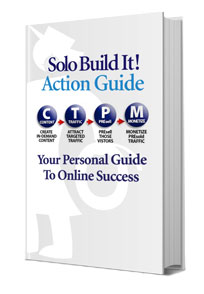 Content based on an aim to help your readers solve a problem or fulfill a need comes first. It drives the…
Content based on an aim to help your readers solve a problem or fulfill a need comes first. It drives the…
Traffic — your potential customers — to your site. Once there, you…
Presell by helping those site visitors achieve their specific goal. You help them realize that there’s a way to solve that problem or fulfill that need. Which builds the trust that leads to…
Monetizing, which is simply the end of the process. You suggest a product or service that leaves the audience feeling you’ve solved that problem for them, or filled their need.
If, in the process, you make a profit, all well and good. But your first aim is always the site visitor and her or his experience on your website. Never sell an affiliate product simply to make money.
How do you keep the customer satisfied?
In Solo Build It! terms, you follow the Action Guide! For everyone else, it’s a question of making your site stand apart with high quality content and no less than a devotion to helping your site visitors get to where they want to be.
A “pretty” website may look great, but if the content doesn’t pass muster with Google and with the visitor, looks mean nothing. Google doesn’t care about a fancy-schmancy design. It cares about the words, and with ensuring websites provide the best possible answers to a question.
Learn how to get your website on Google.
Step 2: Engage the Visitor, Based on Search Intent
Don’t assume you know what your visitors are looking for. Research their search intent and their issues. Dig more deeply into their problems. Consider how you can help them to a solution, and thereby a happier life.
Not sure how? Our article “How to Write a Product Review” will give you a head start.
No matter which way you choose to construct your affiliate marketing business, the topics and therefore products that perform best financially are always those relevant to what your visitor is really looking for.
Step 3: Write Honestly to Build Trust On Your Affiliate Marketing Websites
As long ago as 2009, the Federal Trade Commission announced that publishers (that’s us) must disclose that they receive a commission from products sold through links on their sites. The wording is very clear: every link that could potentially make money must be disclosed. Affiliate links are an obvious example.
A disclosure must:
- be displayed clearly and conspicuously as close as possible before the affiliate link
- use clear language and avoid jargon.

Is this a bad thing? Depends on how you look at it.
Clearly identifying affiliate links shows a strong ethical stance. You’re demonstrating to your visitors that, in an arena where a lot of marketers are simply trying to make money at any cost, you are different.
Turn that disclosure into a selling point. Don’t be vague. Reveal it honestly and confidently. Be upfront. Tell your audience that you’re recommending this product or service and that you stand to get a small commission — and that you’re recommending it because you know and love it, and because you genuinely think it’s a possible key to their problem.
Here’s one of the affiliate statements I use on my own site – note I actually feature it by putting it into a callout box.

Be positive. Look on it as another step on the road to building trust.
Step 4: Be Personal to Stand Out
Finally, when you’re building affiliate marketing websites and recommending products, be personal. Tell the story of how you used this product, if you did. Within reason, try to use the product you’re promoting. Be a guinea pig — let your visitors know you have tried this product on their behalf.
Why? Because personalizing your affiliate content is one way you’ll make your website stand out from the crowd.
Having looked at the theory of affiliate marketing websites, let’s now look at some creative examples of how not to sound like a Kohl’s catalogue.
What Do Affiliate Marketing Websites Look Like?
This is what an affiliate website can look like — and shouldn’t.
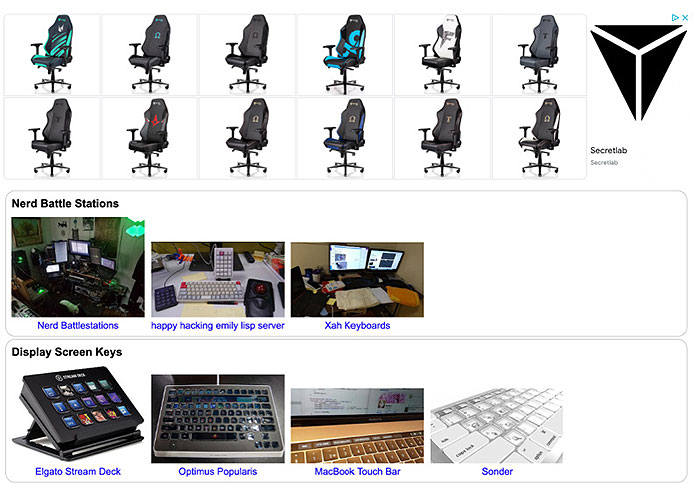
Where’s the content? Where’s the trust-building? Where’s the customer care? A series of random links to an affiliate partner, with no indication that the owner is likely to make money from those links is not best practice!
So what is?
Different Types of Affiliate Marketing Websites Examples
Please don’t put up random links and cross your fingers. It won’t work. Here, instead, are ten examples of best practice in establishing an affiliate presence on your site. Each one balances customer care with profitability.
1. Create a Useful Tool
Some of the most profitable affiliate websites create a useful tool that adds specific value for the site visitor, while adding in affiliate links almost as an after-thought.
SBI! member Karen Patry from Raising-Rabbits.com, for example, gives her readers, for free, her plans to build a simple rabbit run.
Underneath are all the constituent parts and the tools her readers will need to build it. No need to hunt for the exact items: they can instantly click to buy from her affiliate links.
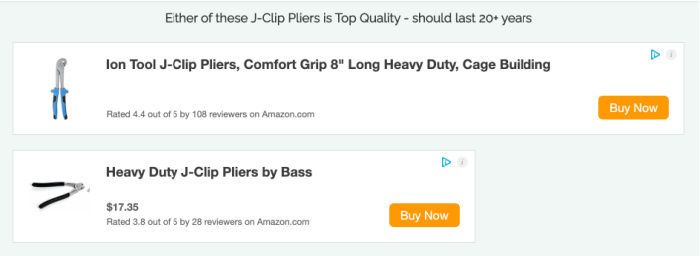
The page is based on a solid keyword, found through SBI!’s Brainstorm It! tool, covers search intent — “how can I make an inexpensive rabbit run?” — with great step-by-step instructions that are clear and easy to understand, and offers her audience a super-useful product.
And how convenient to be able to buy those parts right then and there!
Do you have a tool you can offer for free to your visitors, with related affiliate links?
2. Solve a Problem On Your Affiliate Marketing Websites
Find your audience’s biggest problem — and solve it.
Who’d have thought that rats would be one of the biggest, real live (ugh!) problems for backyard chicken keepers? My discovery (and yes, it was once a real issue for me too!) led to my promoting two of my most profitable affiliate products: a rat trap, and an automatic chicken feeder.
But I didn’t simply identify the issue and write product reviews. I wrote an entire section of high quality, keyword-focused content about rats. Those pages are found organically (i.e., through Google searches). Each page links to an in-depth review of the affiliate products.
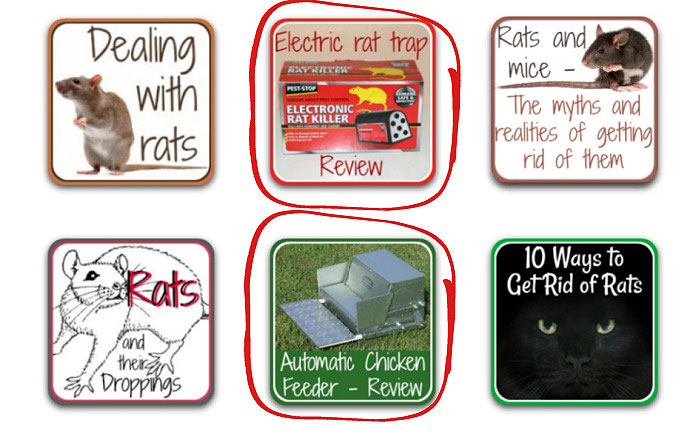
The information they contain means site visitors have confidence that I know what I’m talking about when it comes to rats.
Realizing that I have dealt with this problem — and solved it for myself — builds trust. And trust sells products.
What significant problem do your site visitors have, and how can you help them resolve it?
3. Recommend “Best Of” Products
The more help you can offer readers in your product reviews, the better. So instead of promoting dozens of different products without describing the benefits of any, focus instead on the benefits of those that are, simply, the best.
Julie Baird has a great example on her “Generations Quilt Patterns” website. For what could be dearer to a quilter’s heart than her sewing machine? Yet for a beginner — which is best?
Julie’s beginner quilters don’t need to guess about the best machine for the job. Julie tells them what to look for, focusing on the features of a machine that will most benefit them. She’s entirely honest about features that may sell a more expensive machine, but aren’t necessarily required…
And her headlines speak to her audience’s unspoken questions:
- The Bare Essentials
- Love your Sewing Machine
- The “I’ve Got It and I’m Glad I Do” Features
- Sexy? Yes — But is it Necessary?
… and so on.
Simple, value-driven, customer-focused, honest. All of it designed to benefit the user.
The products don’t necessarily have to be large items. See how Darren Priest reviews the best car waxes — who knew there were so many?!
Which affiliate products could you write a “best of” article about?
4. Write “Best of” Guides
Similar to looking at a couple of “best” items, this affiliate business model example focuses on creating a well-researched article for a larger number of “best” products.
This works best, as most affiliate websites do, if you can test the products yourself. To do it properly can require a lot of hard work exploring each of the products and writing about their pros, cons and “who best fits this product” features.
SBI! member Jill Loeffler has a great example of this type of affiliate marketing on her site, SF Tourism Tips. Comparing the six best wine tours from San Francisco is a hard job, but someone has to do it!
Jill uses her knowledge and experience to compare each trip’s slightly different features. Her information helps her readers decide which of the available trips would suit them best.
Additional helpful advice, knowledgeably given in the article — whether to buy wine on the trip, for example, and tips about wine-tasting — means the visitor to San Francisco can be sure of a perfectly matched trip.
Could your affiliate marketing plans include comparing a number of different “best” products?
5. Compare a Range of Products
Not “best of” but a straight comparison of different types of the same product. Here’s an example from Janice of Small Dog Place, recommending dog harnesses.
A reader — let’s call her Carol — is exasperated. Bella, her senior dog, loves going for walks, but has mobility problems. Carol has been looking for a suitable harness for her for months. Finally, her luck changes and she finds Janice’s site.
Janice has had the foresight to write a page comparing different types of dog harnesses: some for dogs with delicate necks, some for dogs who pull, and one for – gasp! – dogs with mobility issues!
Not only that, but Janice goes on to explain how to choose the correct size, how to fit the harness, how to make sure Bella is comfortable wearing it…
Carol is now a life-long fan!
What product could you sell by comparing different brands or uses?
6. Construct a Cheapest — or Most Expensive — Category List
Does your niche lend itself to being divided easily into different segments?
Suzanne Gardner’s affiliate marketing review site is all about wedding and engagement rings. Her friendly home page acknowledges the confusion her visitors may feel when confronted with the huge choice of rings on the market today.
How to choose?
Suzanne simplifies the process by creating different categories of rings. She divides by metals, stones, style, cost — inexpensive to keep costs down, or expensive, because it’s for life…
But however helpful a list of affiliate links divided into broad categories might be, it’s not enough. Suzanne recognizes that by creating quality content for each category and by sub-dividing each into even smaller categories, each one having its own keyword-focused content page…
What categories could your affiliate products be broken down to? It need not be cost-related — what about genres of books, or types of model aircraft?
7. Create “Content Hubs”
Sometimes, there’s just too much information about products to have them all included on one page. The answer lies in a well organized website architecture. What in the marketing world are called “content hubs” or “content pillars” — in SBI! we would call them Tier 2 and Tier 3 pages.
How they work: the first page acknowledges that there’s a lot of information on this subject and links to other pages which have a detailed review of different products.
A practical example: Sharon’s site, Simply Canning, sells canning equipment as affiliate products. Her first page lists all the equipment needed: essentials, water baths, canning jars, lids, kits… too much to talk about on one page!
So Sharon leads from that page to a specific review of, for example, an “All American pressure canner,” or a Presto pressure canner. Note, too, how Sharon has added a video comparing those two products – genius!
Not only that, but on each review page she includes readers’ own reviews. That’s a great way to build a community!
Could you find affiliate products relevant to your niche that merit their own complete section on your website?
8. List a Number of Small Affiliate Products
Sometimes, there’s just not a lot to say about a product that you think would genuinely be of help to your audience. Christmas ornaments are one example.
And Lesley Postle has another on her website, “Grief and Sympathy.” Recognizing the strong need in grief to hold the loved one close, she provides lists of small, meaningful products within the context of recognizing grief.
In other words, Lesley doesn’t just list the products. Her content acknowledges the pain and only then does she list the affiliate products.
Special tip: Are you getting close to retirement? Then don’t miss Lesley’s article How to Create an Affiliate Marketing Website for Retirement Income.
Don’t automatically assume that small products can’t have their own review pages, though. Who knew that such an everyday item as hiking socks could have such a lot to talk about?!
What small products could you include in your profitable affiliate website?
9. Use Affiliate Links Within Text
This is probably the most common way to use affiliate links: simply include them in your content.
There are two critical points here: first, you need to have built up a lot of trust for these to work. Second, the links must tie in with something in the content itself. Don’t force the content just so you can include links to affiliate products.
Tobias and Stephanie Locsei have ultra-helpful guides for creating gifts on their site, Homemade Gifts Made Easy. Within their guide to making friendship bracelets, for example, are links to free templates they provide themselves, links to a “how to make” video tutorial — and links to affiliate products.
Notice, though, that they don’t “push” the product. The link is there if you’d like to buy, but they make a point of saying “but you don’t have to for this particular gift.”
No heavy sales pitch, no reviews… they sell from having built trust by being ultra-helpful.
Have you built enough trust on your website to be able to include simple text links to affiliate products?
10. Use Video in Your Affiliate Marketing Websites
From the most often used text links to probably the most avoided: video as an affiliate marketing tool.
Let’s be honest. None of us like the sound or sight of ourselves on video. But the fact is that potential buyers love video reviews. They engage your audience immediately, and they also get brownie points from Google, because video keeps your site visitor on your page for longer.
Selling video games? Youngsters, for example, love watching them in action (or so I’m reliably told!). Whole — and extremely profitable — YouTube channels have been built in that niche!
But if video games aren’t your strength, consider a simple piece of film recording how to use a product. An over-the-shoulder walkthrough demonstrating “how to” is often much stronger than text content at explaining, particularly if the product is complicated to use.
And you don’t even need to appear on screen!
Make sure you know what the drawbacks or difficulties of using the product are, either because you’ve used it yourself, had feedback from others, or simply read a series of reviews on Amazon. Address those issues directly in your video review.
It’s not just for static products, either. Sarah Kok uses video effectively on her site Montenegro Pulse to “sell” her affiliate tour — without seeming to sell.
Her enjoyment and enthusiasm spring right off the page. I want a “mile-wide smile” too — if I were going to Montenegro, I would want to try this tour!
Take the plunge! What video material could you produce that would genuinely help your site visitor?
Conclusion: Serve the Reader First. Profit Will Follow
So there we have it: ten different types of affiliate marketing websites. All of them successful ways of helping the site visitor, all of them providing a potentially profitable online business idea for you.
None of it is rocket science. It just takes imagination, persistence, patience, hard work and an ability to focus on longer-term profit rather than short-term gain.
Many “gurus” will tell you there’s no way you can compete in affiliate marketing. I beg to differ. All the example sites above are successful. And they all have this in common…
They have their readers’ backs.
Focus on long-term value. Balance high quality content with genuinely helpful affiliate products. Don’t cram affiliate products onto every page: think about where they can be of use to your site visitor.
Above all, always remember:
It takes months to find a customer and build a relationship. And seconds to lose one.Vince Lombardi

Cath Andrews
Latest posts by Cath Andrews (see all)
- Start a Passion-Based Business and Live Your Dream - February 1, 2023
- What Do You Say When Their Eyes Glaze Over? - December 20, 2021
- How to Monetize Your Email List in 5 Simple Steps - October 26, 2021




